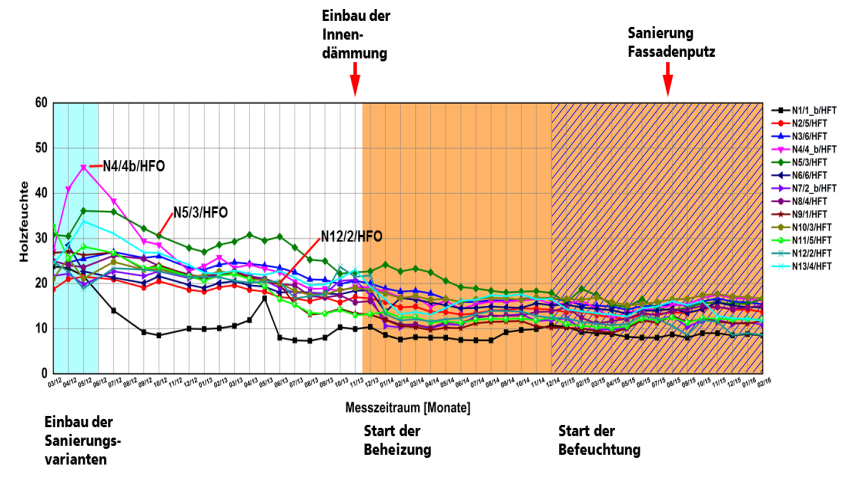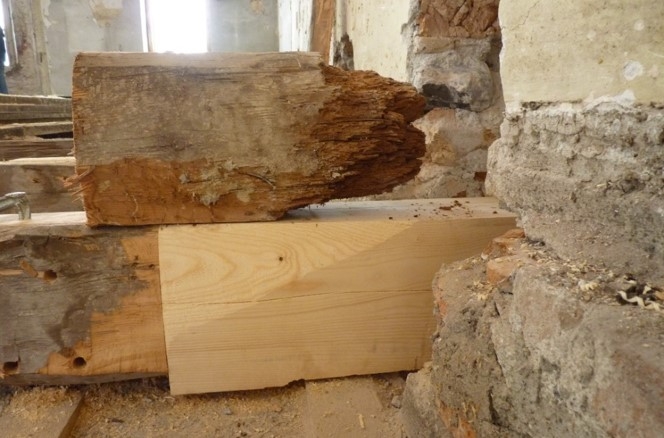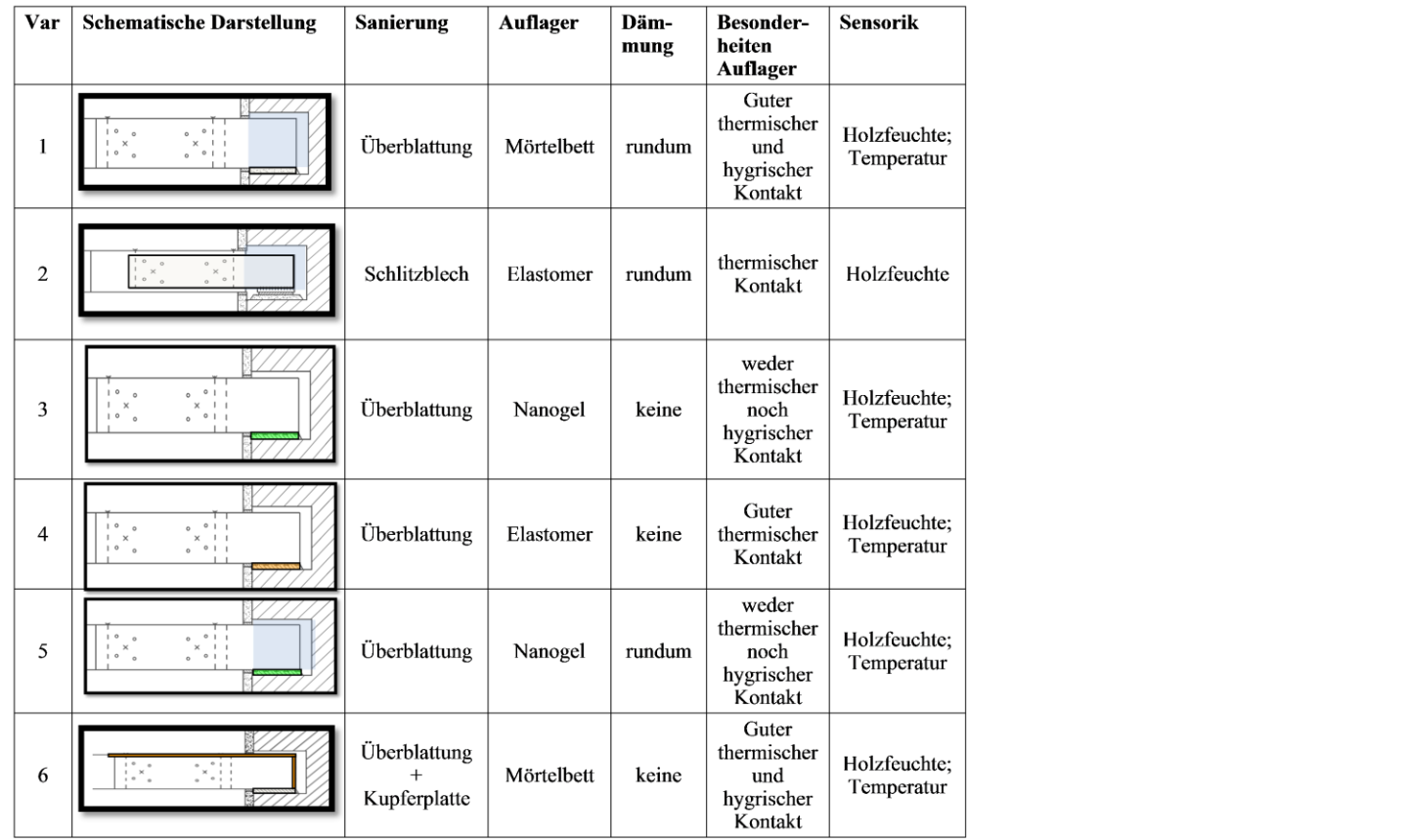The researchers at Fraunhofer IBP took this opportunity to test different renovation techniques on a building and to monitor them by carrying out measurements. In total, they restored 24 damaged wooden beam heads. Six alternative renovation techniques were implemented, which differed mainly in terms of insulation, support and cavities around the beam head.
Which is the best renovation method for the wooden beam heads? Measurements taken after the restoration showed that the moisture content in all beam heads is in an absolutely uncritical range - all measurements taken last year were below 16 mass percent. The differences in the type of support used, i.e. mortar, elastomer or nanogel, as well as in the beam head insulation and cavities thus seem to play a minor role. No clear conclusions can be drawn about the renovation method via the moisture curves. Although the beam head with the integrated copper sheet as a thermal bridge has the highest surface temperatures, this does not necessarily mean that the wood moisture content would be lower than in the other beam heads. Irregularities in the wall seem to play a greater role than the renovation methods.
To verify this, the researchers used WUFI® 2D to recalculate the moisture curves in the beam head for three of the renovation methods. The outdoor climate parameters measured in the vicinity, as well as those of the indoor climate, served as the general conditions. The calculations confirmed the results obtained by measurement, i.e. the renovation methods themselves only play a minor role in this case. The research results show: The system of the wooden beam head integrated in the wall is much less critical than expected. In most cases, the damage that is repeatedly found on beam heads is most likely due to unexpected incidents occurring during the life of the respective building - such as a leaky roof, a leak in the water supply or similar. Thus, it is almost impossible to do anything wrong when renovating damaged wooden beam heads, provided there is adequate external rain protection.
Results
Click
here for an overview of all publications on project results and findings.



